LIZARDS AND SNAKES OF ALABAMA
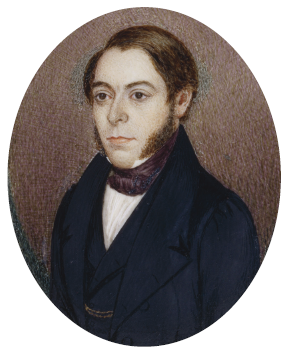
Philip Henry Gosse as a young man of twenty-nine, the year of his return to England from Alabama, painted by his brother, William Gosse. (1839, watercolor on ivory, courtesy of the National Portrait GalleryLondon)
| ADVISORY PANEL | Dr. Gary R. Mullen, Entomology, Auburn University (Emeritus)
Dr. L. J. Davenport, Botany, Samford University
Elberta Gibbs Reid, Birmingham Audubon Society
Dr. E. O. Wilson, Zoology, Harvard University (Emeritus) |
| INAUGURAL SPONSORS | Birmingham Audubon Society
Mary Carolyn Gibbs Boothby
Lida Inge Hill
Fay Belt Ireland
Henry S. Lynn Jr.
Medical Management Plus, Inc.
Dr. Connie S. and Dr. James A. Pittman Jr.
Elberta Gibbs Reid
Frances B. and James W. Shepherd
Becky H. and William E. Smith Jr.
Virginia B. and William M. Spencer III
Ann A. and Donald B. Sweeney Jr.
Dr. Cameron M. and Judge J. Scott Vowell
Alice M. and N. Thomas Williams
Harriett Harton Wright
Louise A. and John N. Wrinkle |
Philip Henry Gosse (18101888) was an English naturalist and illustrator who spent eight months of 1838 on the Alabama frontier, teaching planters children in Dallas County and studying the native flora and fauna. Years after returning to England, he published the now-classic Letters from Alabama: Chiefly Relating to Natural History, with twenty-nine important black-and-white illustrations included. He also produced, during his Alabama sojourn, forty-nine remarkable watercolor plates of various plant and animal species, mainly insects, now available in Philip Henry Gosse: Science and Art in Letters from Alabama and Entomologia Alabamensis.
The Gosse Nature Guides are a series of natural history guidebooks prepared by experts on the plants and animals of Alabama and designed for the outdoor enthusiast and ecology layman. Because Alabama is one of the nations most biodiverse states, its residents and visitors require accurate, accessible field guides to interpret the wealth of life that thrives within the states borders. The Gosse Nature Guides are named to honor Philip Henry Gosses early appreciation of Alabamas natural wealth and to highlight the valuable legacy of his recorded observations. Look for other volumes in the Gosse Nature Guides series at http://uapress.ua.edu.
The University of Alabama Press
Tuscaloosa, Alabama 35487-0380
uapress.ua.edu
Copyright 2018 by the University of Alabama Press
All rights reserved.
Inquiries about reproducing material from this work should be addressed to the University of Alabama Press.
Typeface: Scala Pro
Manufactured in China
Cover image: Nerodia erythrogaster flavigaster, Elmore County, AL; photo courtesy of James C. Godwin
Cover and interior design: Michele Myatt Quinn
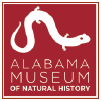 Publication is supported in part by the ALABAMA MUSEUM OF NATURAL HISTORY, Tuscaloosa, Alabama
Publication is supported in part by the ALABAMA MUSEUM OF NATURAL HISTORY, Tuscaloosa, Alabama
Cataloging-in-Publication data is available from the Library of Congress.
ISBN: 978-0-8173-5916-4
E-ISBN: 978-0-8173-9192-8
I see that you are surprised at the rustling noise and motion that occurs among the dry leaves on either side, at almost every step. It is caused by the nimble feet of little lizards, which dart along like lightning as we approach, to the shelter of the nearest log or stone, under which they may hide: they move so quickly that it is very seldom we can catch a glance of their bodies; we trace them only by their motion and their sound. There are three or four species, the most common of which is called, by a strange misnomer, the Scorpion (Agama undulata); and it is this species which so rapidly scuttles along under the crisped leaves. It is about six inches long, of which half is tail: above, it is greyish, with darker bands; underneath it is palish, with a patch of bright blue under the throat, larger in some (I think, males) than in others. It is covered with prominent scales, each having a sharp ridge, which gives it a rough appearance. They are very abundant, and may be often seen chasing each other about some old log, running by little starts, now on the top, now on the sides, and now on the bottom, it being all the same whether the back be upward or downward.
Philip Henry Gosse, Letters from Alabama, Letter III, Dallas County, June 1, 1838
Abbreviations
Throughout this book, various agencies, programs, and legislation are frequently represented as acronyms with which the reader should become familiar.
| ADCNR | Alabama Department of Conservation and Natural Resources |
| AUM | Auburn University Museum of Natural History |
| ESA | Endangered Species Act of 1973, as amended |
| SWAP | Alabamas State Wildlife Action Plan (2005, revised 2015) |
| USFS | US Forest Service |
| USFWS | US Fish and Wildlife Service |
Introduction
This book is designed to update the squamate (lizard and snake) fauna described in Mounts (1975) comprehensive volume on the reptiles and amphibians of Alabama. Our treatment represents the second in a series of volumes that will cover each major taxonomic group described in Mounts seminal work. Alabama possesses one of the most species-rich biotas in north temperate areas, and this richness is reflected in some groups of lizards, such as skinks, and especially in snakes. Here, we provide a modern description of that diversity.
Our summary of the lizards and snakes of Alabama centers on describing their biodiversity. This approach examines all species known from the state, describes important regional variation within each species, and describes changes in species across the many habitats that comprise the state. Significant field studies, especially of Alabamas threatened and endangered species, have been performed, and we use these to guide our discussion of each species. The field of systematics has re-emerged as a primary goal of biological sciences, and this has been coupled with a healthy debate on species concepts (e.g., Frost and Hillis 1990). This debate has expanded the focus of studies of speciation from tests of reproductive isolation (e.g., Shine et al. 2002) to discovery of diagnostic features indicative of unique lineages on phylogenetic trees (e.g., Zaher et al. 2009). These changes have increased the known diversity of the state and have pointed to new directions for research that are likely to continue to expand Alabamas known squamate fauna. We provide diagnostic features and summarize key life history variables of each species and then indicate conservation efforts and management tools designed to maintain each of them. To reach this goal, we first list the taxa currently known from the state and then present climatic, geologic, and geographic features that shape squamate diversity. We end our introductory material by outlining the information selected to characterize each species account.
Our target audience remains the same as that for Mount (1975). We aim to enlighten people who are interested in the natural history of their local biota because we know these people will develop responsibleattitudes toward the role that humans play in sustaining the Earths ecosystems. Moreover, those with knowledge of natural history and a willingness to experience nature have a vast new world full of opportunities for soul-enriching experiences that we have had as biologists and hope to generate for others. This publication is a compromise of sorts in that it was prepared for use by the layman as well as the serious student of southeastern herpetology. The life history accounts are focused on providing information of interest to the lay public, and detailed information regarding taxonomy as well as recent citations of key field research are presented for serious students of herpetology.

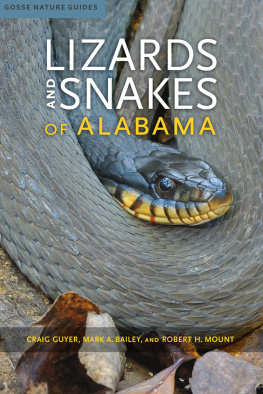

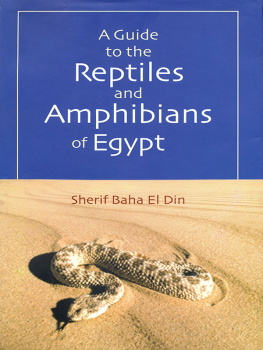
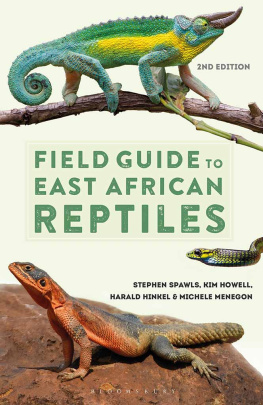
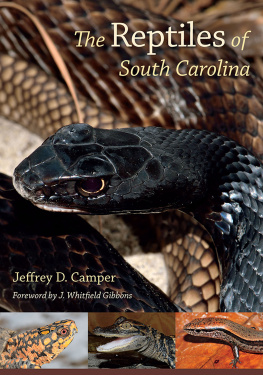
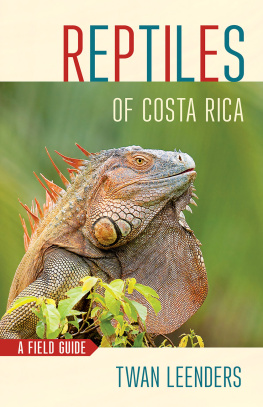
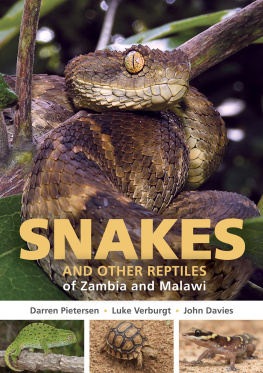
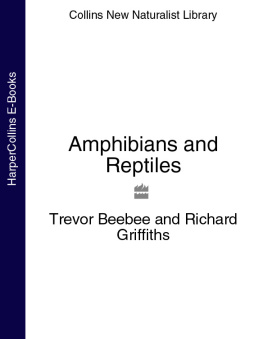
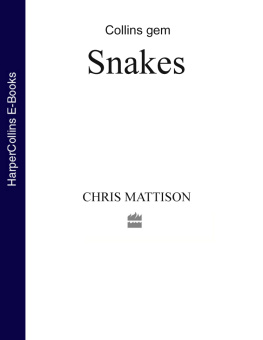
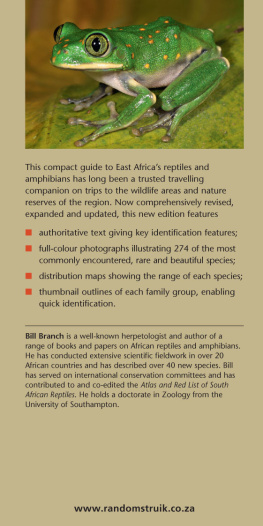


 Publication is supported in part by the ALABAMA MUSEUM OF NATURAL HISTORY, Tuscaloosa, Alabama
Publication is supported in part by the ALABAMA MUSEUM OF NATURAL HISTORY, Tuscaloosa, Alabama